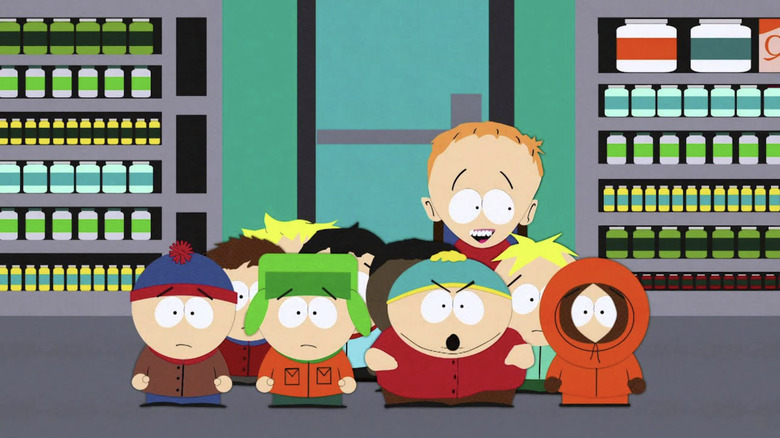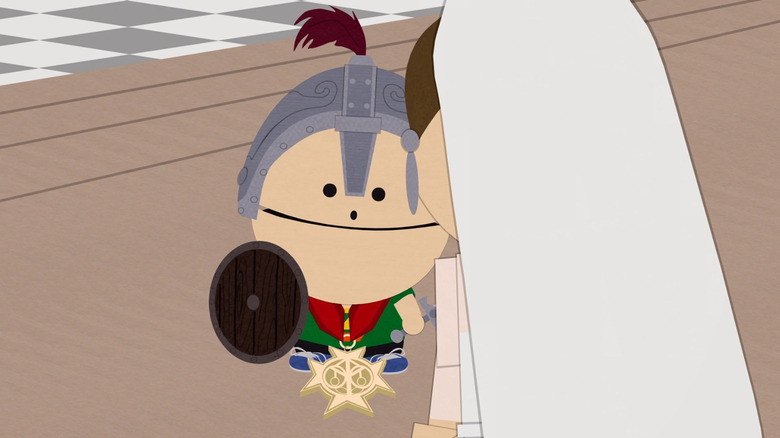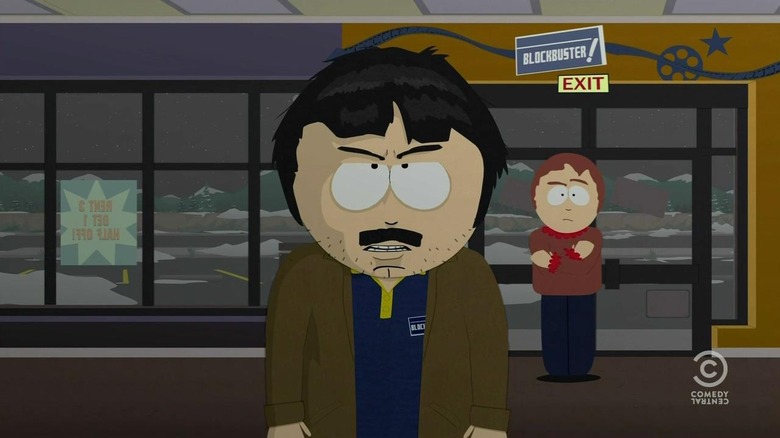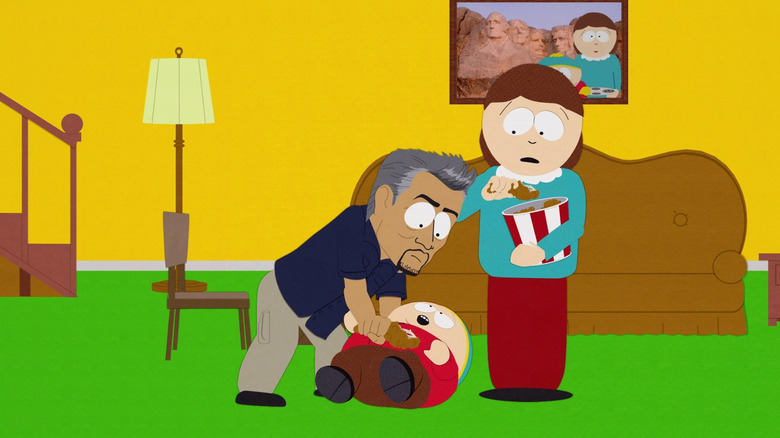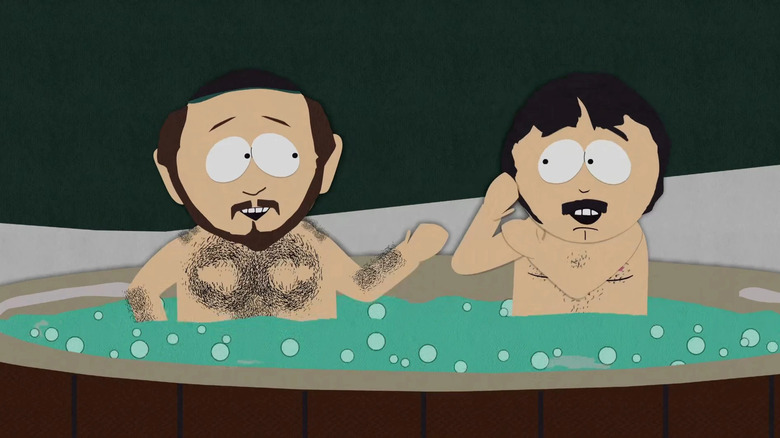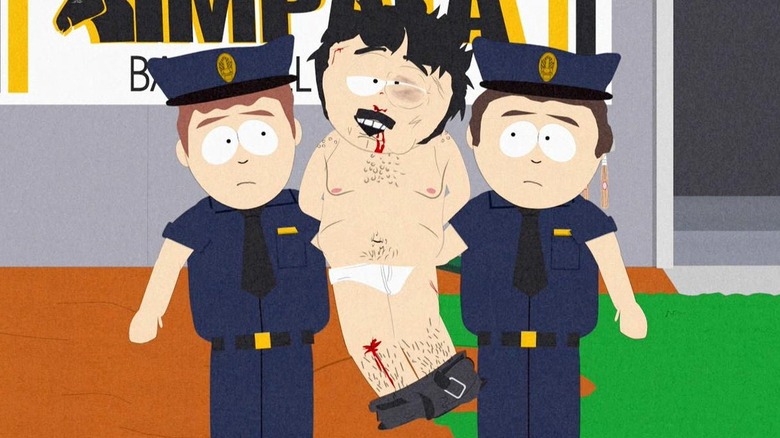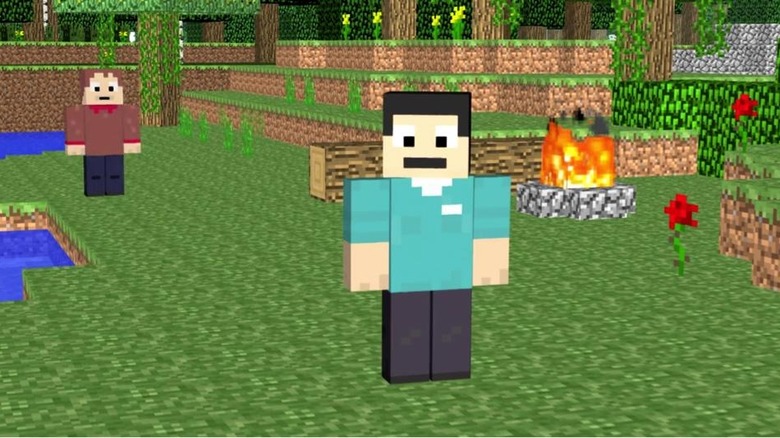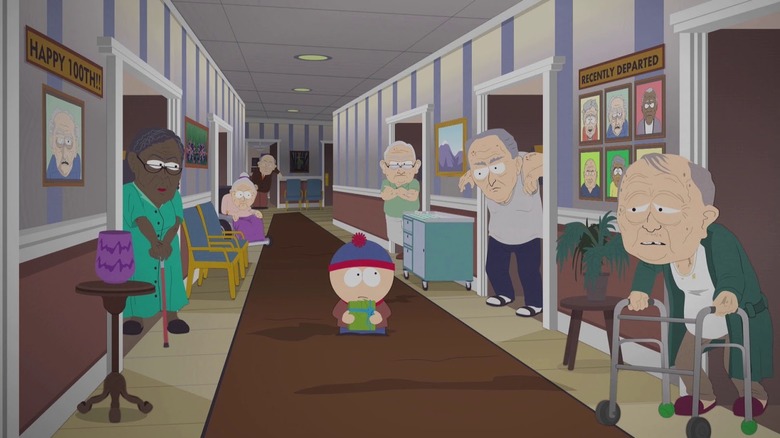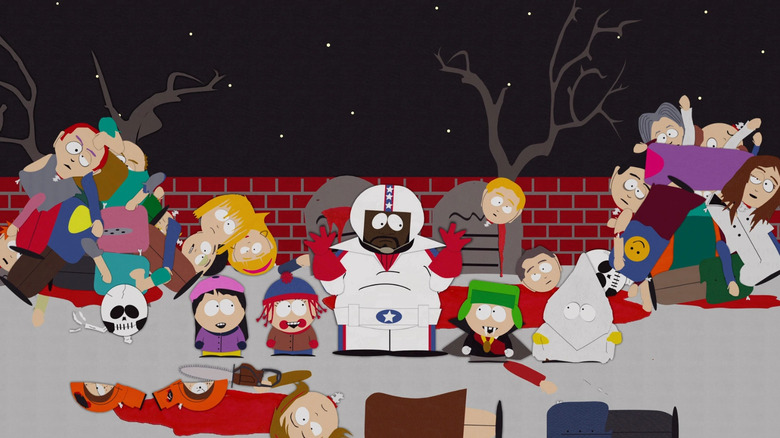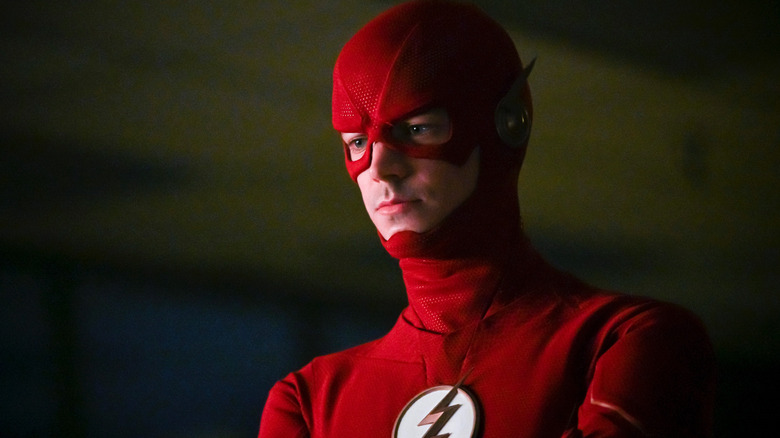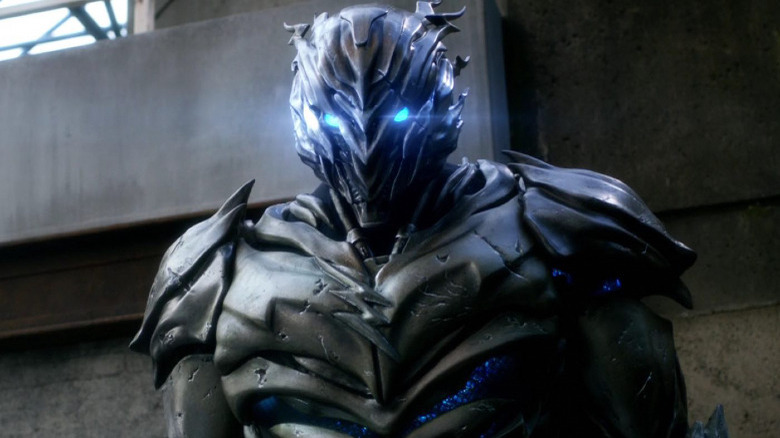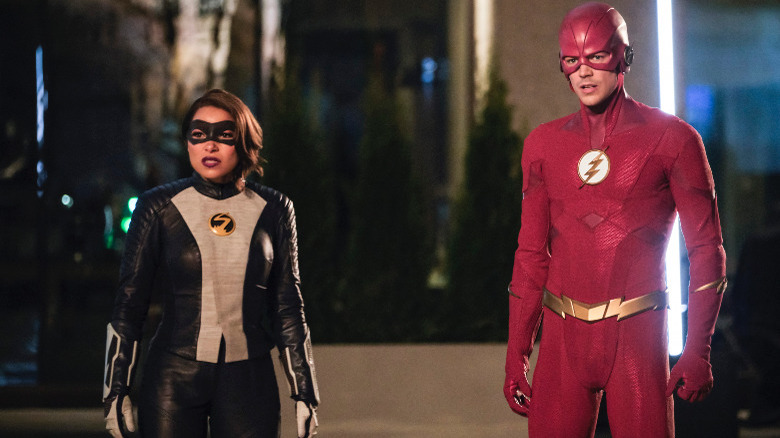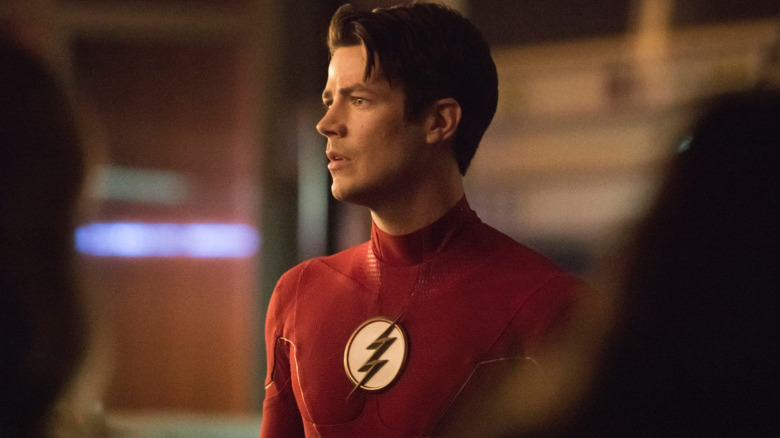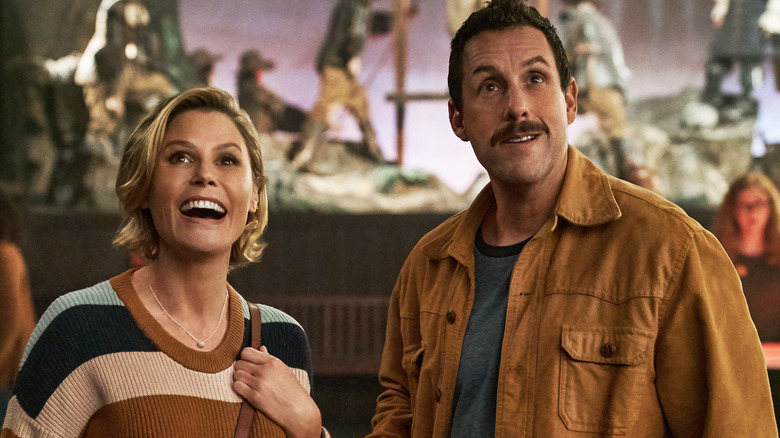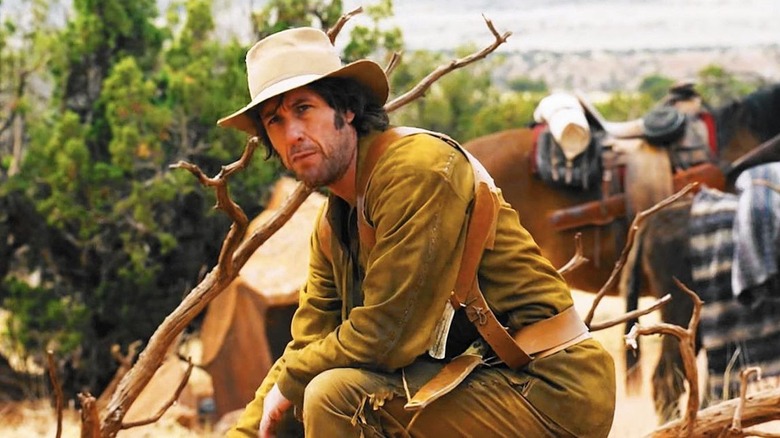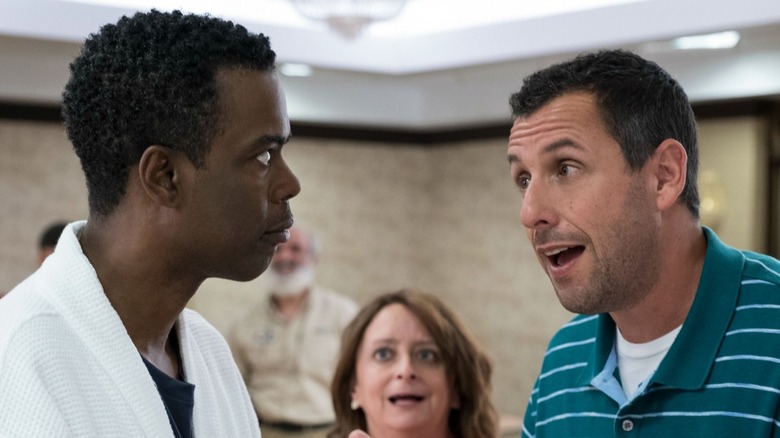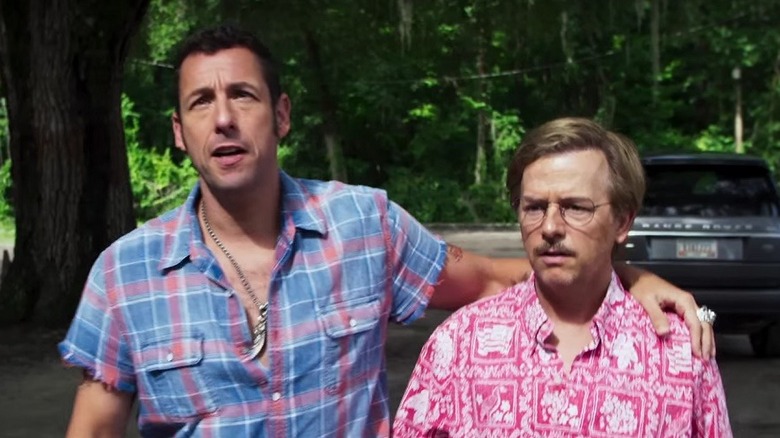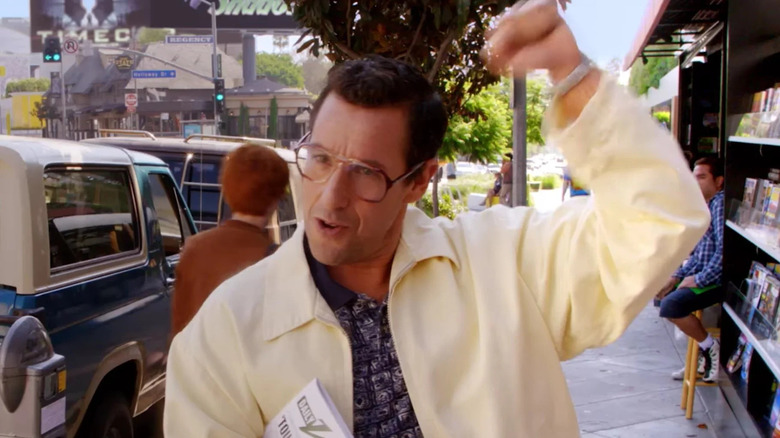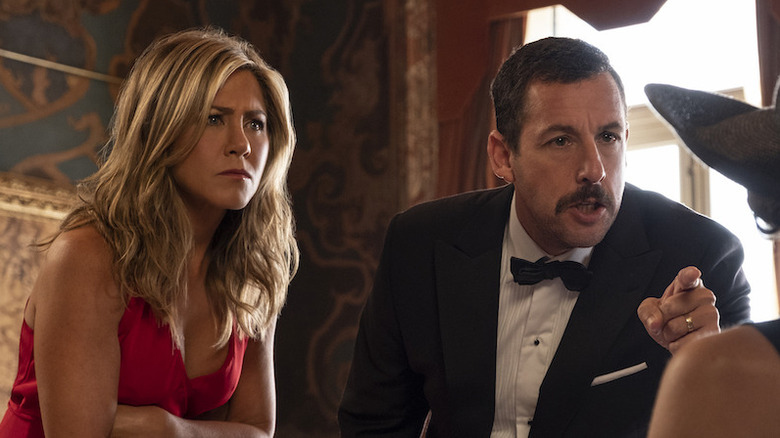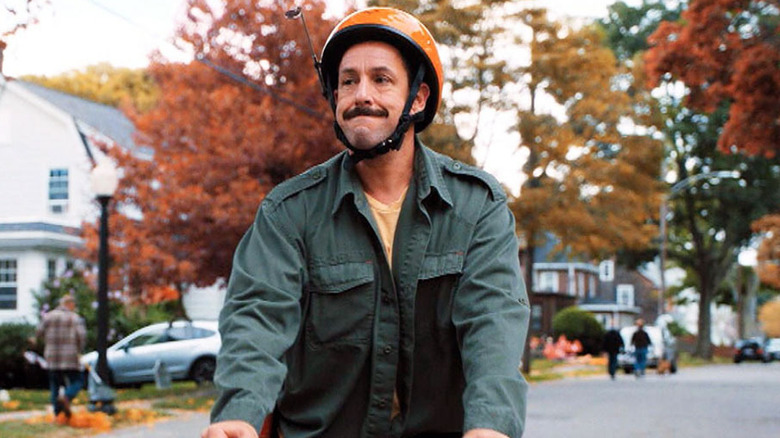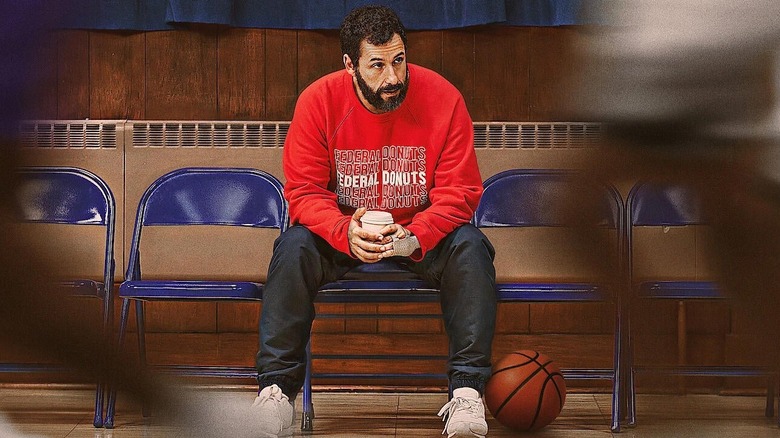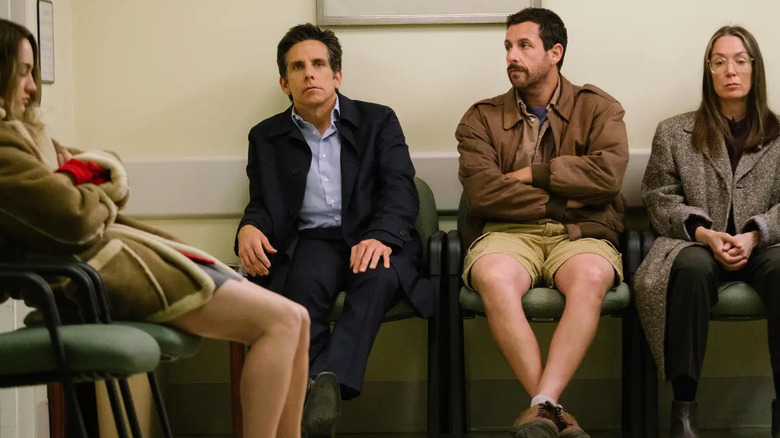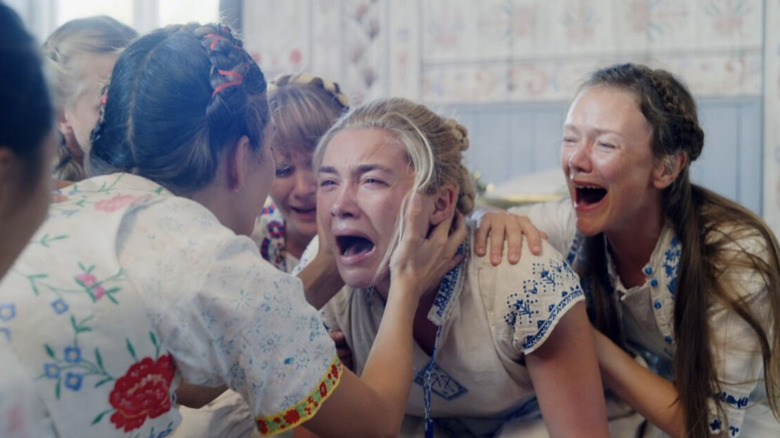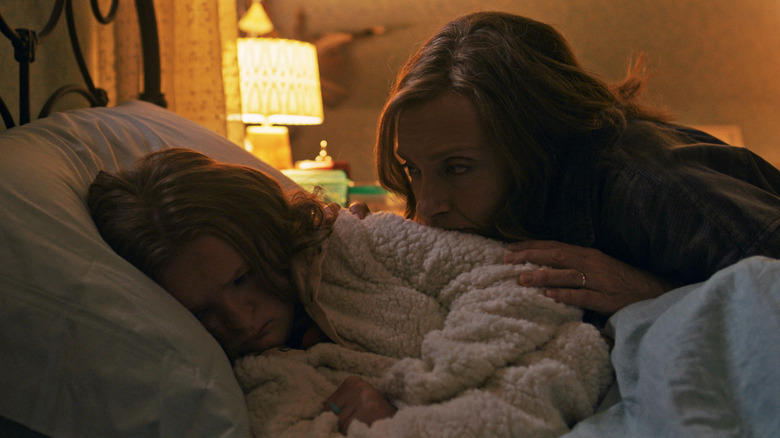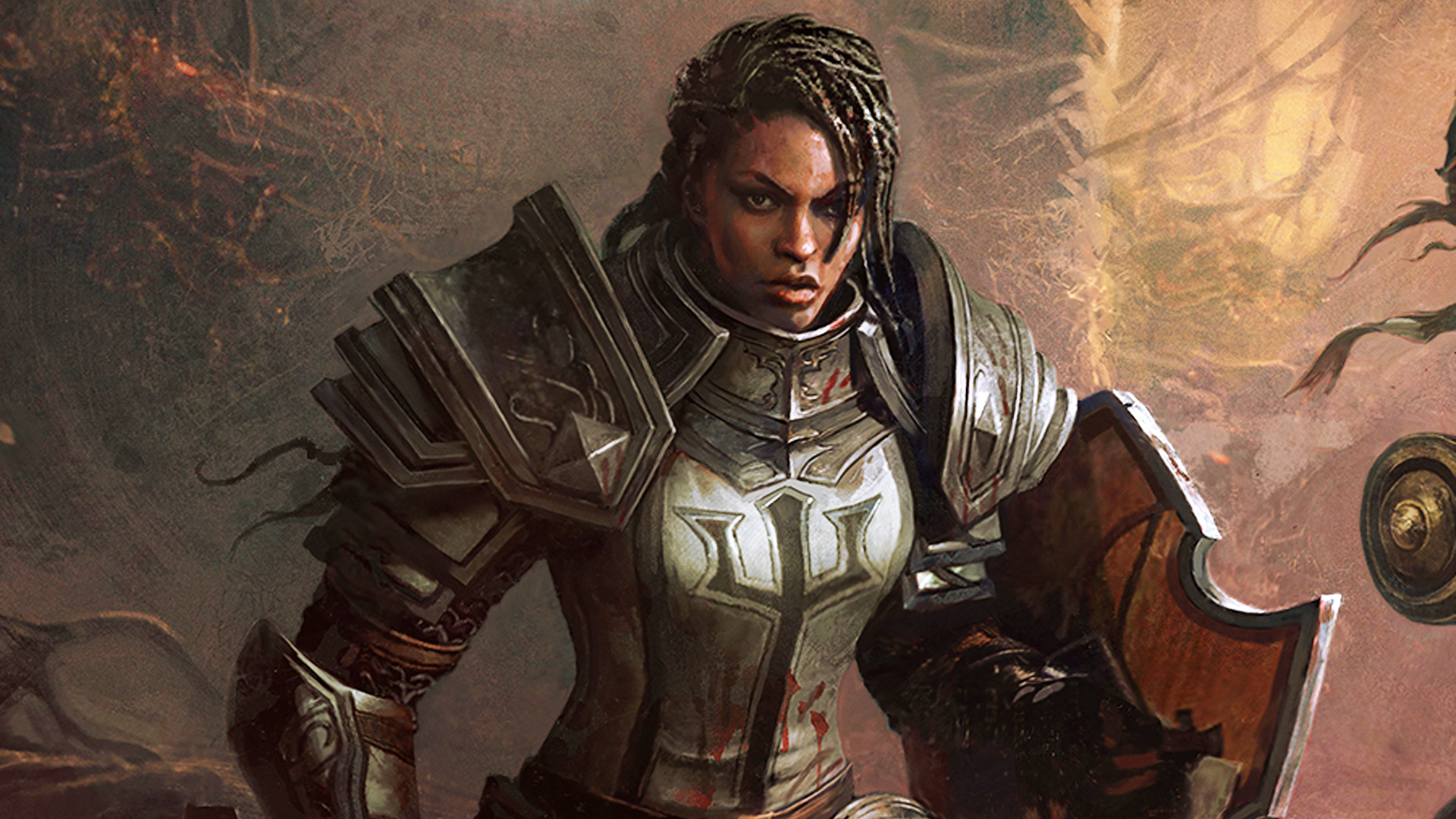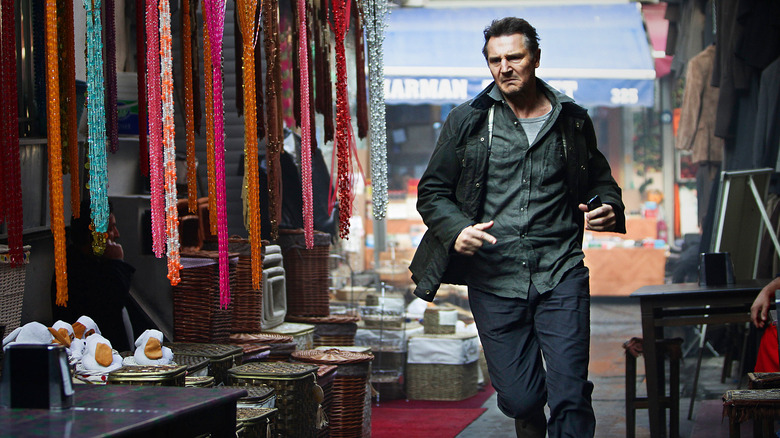
"I have a very particular set of skills"; Liam Neeson's iconic threat in "Taken" spawned many internet memes, two disastrous sequels, and a complete career shift for one of Hollywood's most respected dramatic actors. Prior to "Taken," Neeson had dabbled in the action genre with films like "Darkman" and "Batman Begins," but he was best known for his more serious projects. He certainly wasn't someone that film fans would compare to Arnold Schwarzenegger, Sylvester Stallone, Bruce Willis, or Keanu Reeves.
After the success of "Taken," Neeson became one of the generation's leading action stars. Even though the Irish actor is in his 70s, he's still the most fearsome person in any room that he walks into. Neeson has done many action films since, but none of them compare to "Taken." "Taken" is the ideal modern action movie: the story is simple, the bad guys are menacing, and the battles are relentless. The film holds up, even if the disappointing sequels did their best to diminish the realism of the series.
Although it has certainly inspired many parodies, the film takes itself pretty seriously. "Taken" isn't trying to set up a larger universe, and you didn't have to stick around for a post-credit sequence. It's pure pulp entertainment. Here are 16 movies like "Taken" that you should check out.
A Walk Among The Tombstones (2014)

Neeson has appeared in several action films that are similar to "Taken," but unfortunately, most of them have just felt like retreads of what he already did. Films like "Run All Night," "Memory," "Unknown," "Honest Thief," and "The Commuter" are pretty much interchangeable. However, Neeson did manage to show a little bit more complexity in the 2014 film "A Walk Among The Tombstones." Similar to "Taken," "A Walk Among The Tombstones" understood that action movie fans wanted to see an intelligent main character, who didn't just have to rely on his physical prominence to emerge victorious.
"A Walk Among The Tombstones" follows the private detective Matthew Scudder (Neeson), who retired following a traumatic incident during one of his previous cases. Scudder is called out of retirement when a drug addict named Peter Kristo (Boyd Holbrook) asks for his help. Peter's brother, Kenny (Dan Stevens), is reeling from the death of his wife. Kenny wants Scudder to track down and kill the men responsible.
Although "A Walk Among The Tombstones" has all the great action that Neeson's fans would come to expect, it allows him to play a much darker character. It's made very clear that Scudder is not a good guy. He's a violent man, but in this dark story, he's hardly the most unlikeable character. "Taken" and "A Walk Among The Tombstones" would make a great double feature for anyone who wanted to see Neeson's range as an actor.
Harry Brown (2009)
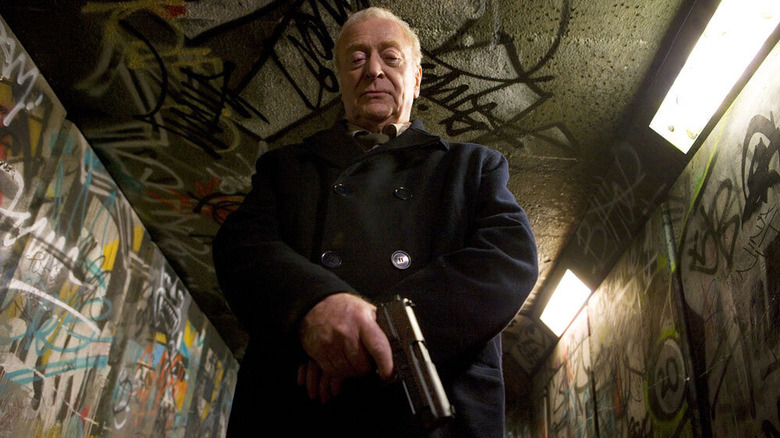
One of the coolest things about "Taken" is getting to see an older action hero. Neeson proved that kicking butt wasn't just a young man's game! The legendary British actor Michael Caine made a similarly surprising resurgence within the action genre with the thriller "Harry Brown." It wasn't Caine's first action endeavor; he had starred in classics like "Get Carter," "The Italian Job," "Zulu," and "The Ipcress File" earlier in his career. However, "Harry Brown" allowed Caine to prove to younger viewers that he was much more than Batman's butler.
The titular character is a former Royal Marine, who is shocked to see the level of violence that plagues the streets of modern England. When his best friend, Len Attwell (David Bradley) is killed, Brown seeks justice. The cops are unable to provide that, so Brown takes the law into his own hands. Caine was taking a risk with the role. It easily could have descended into laughable self-parody. However, "Harry Brown" completely commits to its premise, and its depiction of youth violence is actually pretty disturbing. Hopefully, the film is not an anomaly within Caine's late career, and he'll return to the action genre again sometime soon.
Clear And Present Danger (1994)
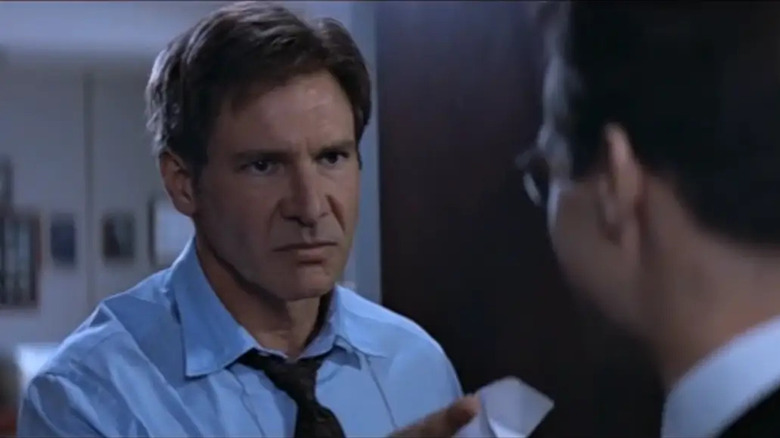
Neeson's character in "Taken" was relatable because of his sense of honor. This is the same reason that Tom Clancy's iconic Jack Ryan character became so beloved among readers. While Jack certainly has seen his fair share of combat, he swears to put his moral conscience first. Although there are many great Jack Ryan films, 1994's "Clear and Present Danger" shows how Jack begins to question the "official story" that he is told.
In the film, Jack (Harrison Ford) learns that the American businessman Peter Hardin and his family were killed on a U.S. yacht in the Caribbean Sea. Jack discovers that there is a greater conspiracy at play; Hardin was secretly helping to fund the South American Cali Cartel. Jack is wary because Hardin was a close friend of the U.S. President Bennett (Donald Moffat). In his investigation, Jack learns that the President has blood on his hands.
Jack proves how far he is willing to go in one of the film's most powerful scenes. He confronts the President, and accuses him of betraying everything that he has sworn to represent. After Ford completes his fiery speech, it's easy to determine who is the real patriot between the two.
License To Kill (1989)
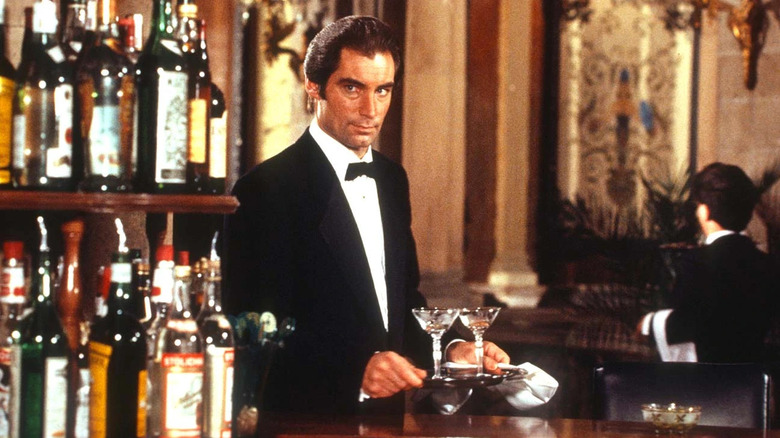
One of the reasons that Bryan Mills felt like such a unique action hero in the "Taken" franchise is that he wasn't anything like James Bond. Mills wasn't interested in seducing women or indulging in beverages; he was simply a man on a mission, who was determined to protect his family. As a result, the "Taken" franchise feels much more realistic than a majority of the 007 films. That being said, 1989's "License to Kill" is unlike any other film in the Bond franchise. Timothy Dalton's second film as Bond is one of the darkest and most violent entries in the series. "License to Kill" feels closer in style to a Canon pulp thriller than any of the slick 007 films that starred Sean Connery or Roger Moore.
In "License to Kill," Bond has been temporarily suspended from duty as an MI6 agent, and his license to kill has been revoked. Here, Bond isn't working on a new mission to protect his queen and country: He's out for revenge. Bond's friend, Felix Leiter (David Hedison) was brutally attacked after his wedding by the remorseless drug lord Frank Sanchez (Robert Davi), and Felix's new wife, Della Churchill (Priscilla Barnes), has been murdered. Bond decides to avenge his friend's loss. The result of this premise is a James Bond outing darker and grittier that those before it.
Bullitt (1968)
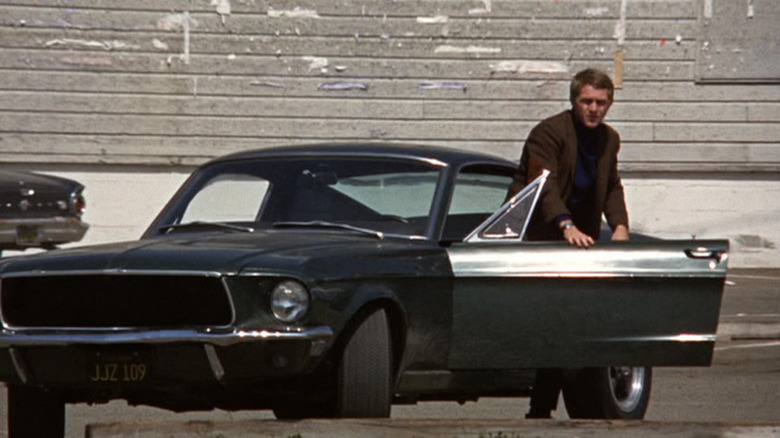
"Taken" was a cool action film because Bryan Mills didn't have the benefit of working with a system that supported him. He is trapped overseas, and knows that he needs to only trust himself if he wants to save his daughter. Action heroes are generally more compelling if they are cut off from help. When you're talking about charismatic action stars that know how to do that, Steve McQueen's name has to be on the list.
Like Neeson, McQueen generally appeared in more serious action films. His characters are less interested in spouting off cheesy one-liners than they are completing their missions. Of all of McQueen's films, 1968's "Bullitt" is perhaps his most iconic. The movie is best remembered for its incredible car chase sequences. During its initial release, "Bullitt" generated a significant amount of hype from action movie fans due to the fact that McQueen himself drove during the film's most exciting chase scene. His commitment made the film even more exciting.
Like Bryan Mills, the character of Lieutenant Frank Bullitt is an underdog fighting against the system. Bullitt isn't just looking for mobsters; he has to fight corruption within the ranks of the San Francisco Police Department.
Commando (1985)
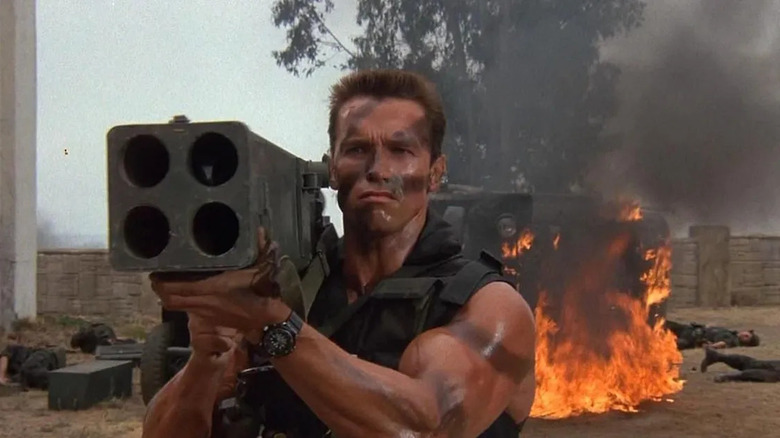
An issue that many modern action movies have is simply being too complicated. When you're dealing with multiverses, sequels, television spin-offs, and hidden Easter Eggs, it can make it much harder to actually just sit back and enjoy the movie you are watching. "Taken" didn't have any of those issues. The story is very simple, and it's easy to pick up on. You don't have to know a lot about Bryan Mills' backstory before the action starts; he is defined by his skill as an ex-CIA agent and his endless love for his family.
Arnold Schwarzenegger starred in many action films and franchises, but 1985's "Commando" is the purest distillation of what he does best. Schwarzenegger stars as Colonel John Matrix, a retired member of the U.S. military that raises his daughter, Jenny (Alyssa Milano). Matrix is comfortable with his quiet lifestyle, but he's called back into duty when a group of mercenaries break into his home and kidnap Jenny. Similar to "Taken," "Commando" realizes that showing fathers during the heartbreaking moments when they fear for their children's lives was critical. Matrix may not be afraid to head into a hectic battle, but the thought of losing Jenny truly terrifies him. Matrix decides to use all of the skills that he learned from his career in the military to track down Jenny's kidnappers and bring them to justice. Although "Commando" is a far goofier film than "Taken," the slower scenes between Schwarzenegger and Milano are genuinely heartfelt.
Air Force One (1997)
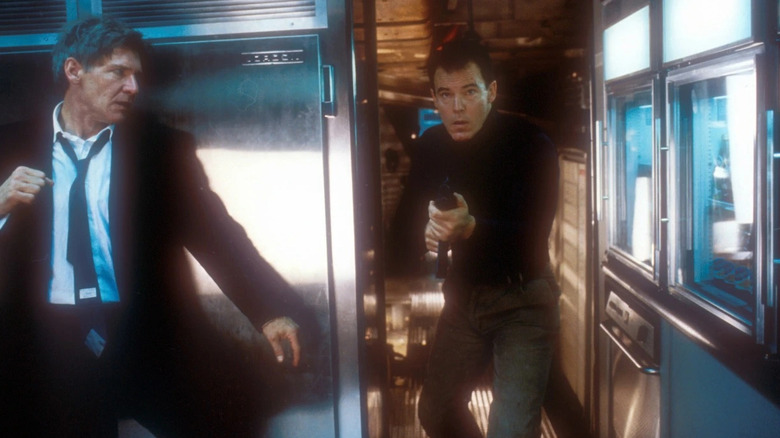
A great action hero knows the importance of putting their family's safety first and putting their own life on the line to save the people that they care about. It doesn't matter who they are — they could be a former CIA agent like Bryan Mills, or, they could also be the President of the United States. The idea of the Commander in Chief kicking butt and taking names sounds like a parody of action movie cliches, but surprisingly, "Air Force One" took the idea in an interesting direction. Harrison Ford was completely convincing as both the leader of the free world and a guy that you wouldn't want to mess with in a fight.
Ford stars as President James Marshall, a Vietnam War veteran who is popular among his constituents. Marshall speaks fluent Russian, and attends a meeting in Moscow. He declares that the United States will not negotiate with terrorists. Unfortunately, "Air Force One" is hijacked by the radical terrorist Egor Korshunov (Gary Oldman), a fiercely loyal to the neo-Soviet regime of Kazakhstan and its fascist leader, General Ivan Radek (Jürgen Prochnow). Marshall has learned to hate both of these men; Egor is holding the First Family hostage, and Radek is responsible for the massacre of many innocent civilians.
Marshall uses his wits to save both his family and the country that he has sworn to protect. If you tend to find political movies boring, "Air Force One" is a good alternative.
First Blood (1982)
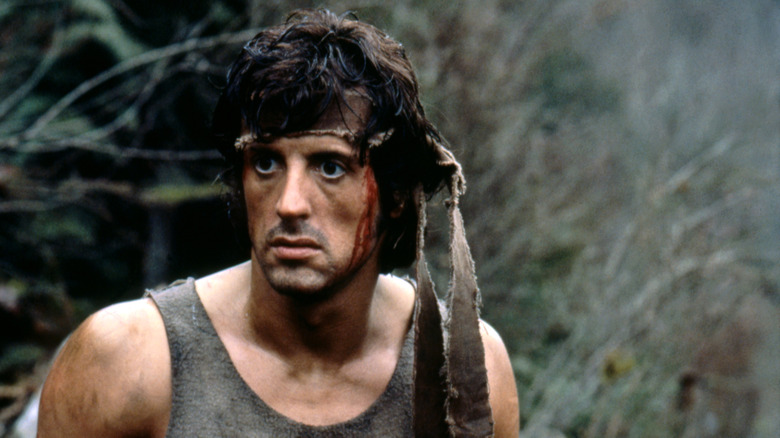
"Taken" was a breath of fresh air because it wasn't afraid to take itself seriously. Action films had gotten so campy that it was hard to take any of them seriously. In many ways, the "Rambo" franchise is the epitome of everything wrong with the action genre. However, you may be surprised to learn that the first film in the franchise is radically different from the sequels.
"First Blood" is based on the 1972 novel of the same name by David Morrell, and tells the story of the traumatized Vietnam War veteran John Rambo (Sylvester Stallone). After returning home, he isn't offered the mental health services that he needs and feels like a stranger in his native country. Rambo has become a drifter, and searches for an old friend from the war as he treks to a small town called Hope, Washington. After he receives the heartbreaking news that his friend is dead, Rambo is confronted by the corrupt Sheriff, William Teasle (Brian Dennehy). Teasle grows increasingly infuriated by Rambo when he tries to make his way back into town, and declares him to be a vagrant.
Although "First Blood" turns into a survival action thriller, it has very serious themes that were ignored by the subsequent films in the franchise. In the 1985 sequel, "Rambo: First Blood Part II," Rambo seemingly forgets everything that he has learned, and becomes a blind patriot.
The French Connection (1971)
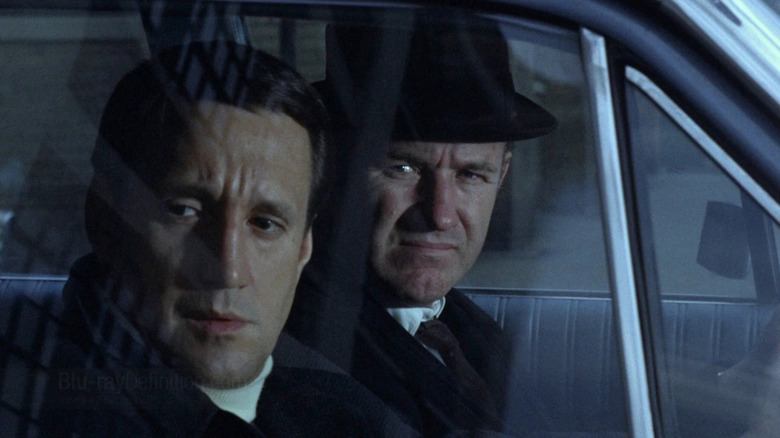
One of the reasons that Bryan Mills was such a unique hero in the "Taken" franchise was that he didn't just rely on his physical skills. Mills' experience with the CIA taught him valuable problem-solving techniques, which turned him into a valuable detective. There aren't a lot of detectives in movies that are quite as iconic as Popeye Doyle (Gene Hackman) from "The French Connection." The influential action movie hasn't aged a day since its initial release in 1971.
The New York Police Department tasks Popeye with finding the heroin smuggler Alain Charnier (Fernando Ray) and putting a halt to his syndicate. Charnier is responsible for bringing massive amounts of the illegal drug into New York. Charnier and his partner, Cloudy Russo (Roy Scheider), have to work around yellow tape to complete their investigation. There's a reason that "The French Connection" felt so gritty and realistic; the film was loosely based on a real case, and the characters of Popeye and Cloudy were inspired by the real detectives Eddie Egan and Sonny Grosso, respectively.
The Bourne Identity (2002)
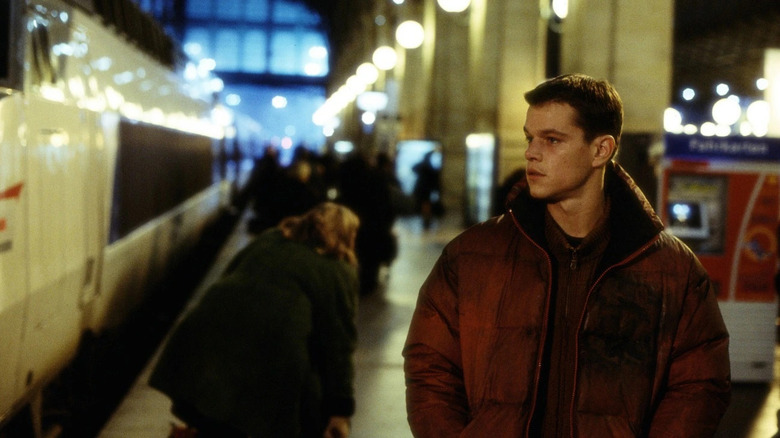
In many ways, the success of "The Bourne Identity" paved the way for "Taken." In the early 21st century, action cinema had begun to decline. Two of the biggest action movie franchises, James Bond and "Mission: Impossible," had just introduced embarrassing new installments. 2002's "Die Another Day" and 2000's "Mission: Impossible II" did their best to ruin everything that their franchises had built. Unfortunately, it seemed like the days of truly exhilarating action films were gone.
"The Bourne Identity" managed to return the action genre to its roots by scaling it back. Between the intelligent story, compelling characters, interesting political subtext, and creative fight sequences, "The Bourne Identity" essentially started a new trend in action cinema.
Similar to Neeson before "Taken," Matt Damon wasn't exactly who you would think of when someone said the phrase "action star." While Damon had proven his merit as a dramatic actor in films like "Good Will Hunting," "Saving Private Ryan," "The Rainmaker," and "Rounders," he wasn't quite the action star that he is today. However, no one that has seen "The Bourne Identity" can cast doubt on Damon's physical abilities. Both Neeson and Damon used their experience with more serious films to make their action projects even more emotional.
Live Free Or Die Hard (2007)
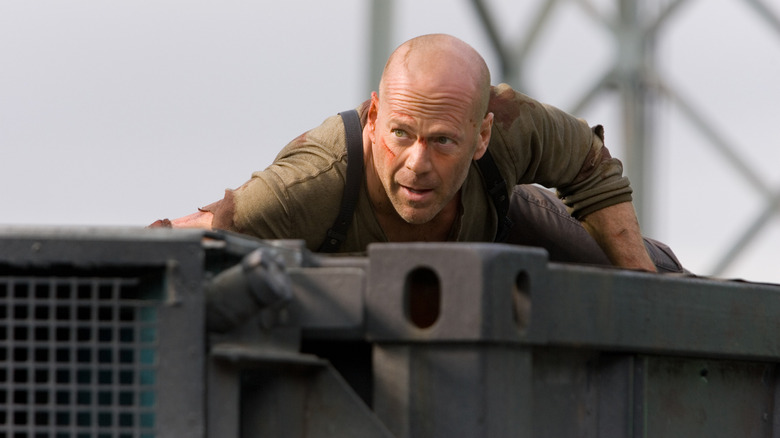
If you're talking about the greatest action movies of all-time, it all comes back to "Die Hard" in one way or another. Bruce Willis' performance in the 1988 classic paved the way for an entire generation of imitators. John McClane is the ideal action hero: He's just an average New York cop who gets caught in over his head, and he's forced to use his skills to go up against an impossible enemy. Every action movie hero since, including "Taken's" Bryan Mills, is honoring the legacy of John McClane in one way or another.
Of all the films in the "Die Hard" franchise, 2007's "Live Free or Die Hard" feels the closest to "Taken." Both films force their heroes to be in a vulnerable position when their daughters are kidnapped. McClane does not have a perfect family life, and he has struggled to connect with his daughter, Lucy (Mary Elizabeth Winstead). Lucy is kidnapped by the villainous cyber-terrorist Thomas Gabriel (Timothy Olyphant), a former Defense Department analyst who wants to create havoc by hacking into the American government's computers. Of course, McClane is the only one who can stop him.
Both "Taken" and "Live Free or Die Hard" pull off a very challenging feat: they manage to pack in a lot of action and violence, even though they were both rated PG-13 by the MPAA.
Dirty Harry (1971)
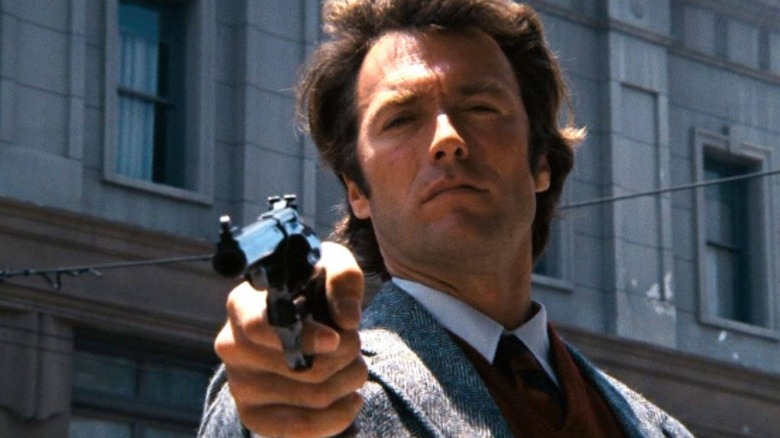
"Taken" combines the action and mystery genres into a fun mix of suspenseful fight sequences and clever problem solving. "Taken" feels a little bit more intelligent than most action movies, but never fails to deliver on the spectacle either. This is one of the reasons that the "Dirty Harry" films are so beloved. Clint Eastwood's San Francisco Police Department Inspector Harry Callahan would probably get along with Bryan Mills; both men are complete professionals who have no time for corruption, distraction, or indulgences.
The "Dirty Harry" movies have plenty of great moments, but if you haven't checked out the series yet, then you can't go wrong with the original 1971 classic. In his first adventure, Harry is forced to track down the insane assassin Scorpio (Andy Robinson), who is responsible for a series of killings throughout the city. Both "Dirty Harry" and "Taken" took their villains seriously; Scorpio is a little eccentric, but he's completely terrifying.
Layer Cake (2005)
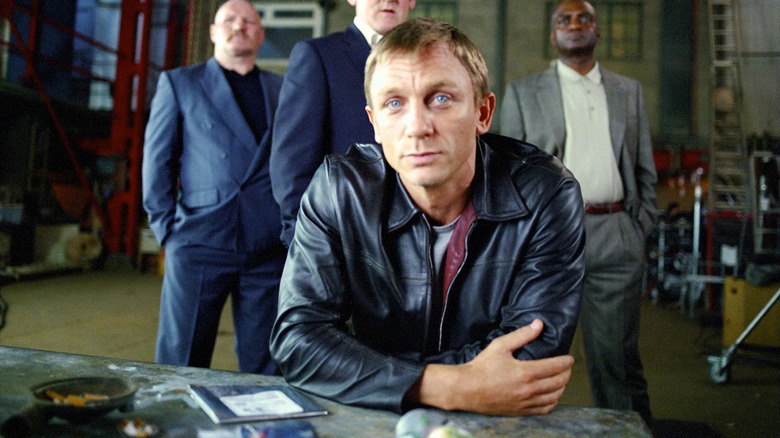
In "Taken," Bryan Mills doesn't particularly enjoy his profession. He's glad that he's left his life of violence behind him, and he would rather spend time with his family. Mills is only pulled back into the world of hunting down criminals through dramatic circumstances. The idea of a violent man regretting his life choices was expertly shown by Matthew Vaughn in his 2005 film "Layer Cake." Vaughn's success with his directorial debut allowed him to move on to bigger projects, including "X-Men: First Class" and the "Kingsman" franchise.
"Layer Cake" follows a cocaine distributor known as "XXXX" (Daniel Craig). XXXX is looking to retire from the drug smuggling business, but he's called back into action to track down the drug addict Charlie (Nathalie Lunghi). Charlie is the daughter of a powerful figure within the drug trade, and she's been kidnapped. XXXX starts off on a simple mission to solve the kidnapping, but like Mills in "Taken," he realizes that he's in over his head. "Layer Cake" was released only one year before Craig's debut as 007 in the James Bond reboot "Casino Royale." Bond fans that enjoy Craig's more serious take on the character may want to check out this underrated thriller.
In The Line Of Fire (1993)
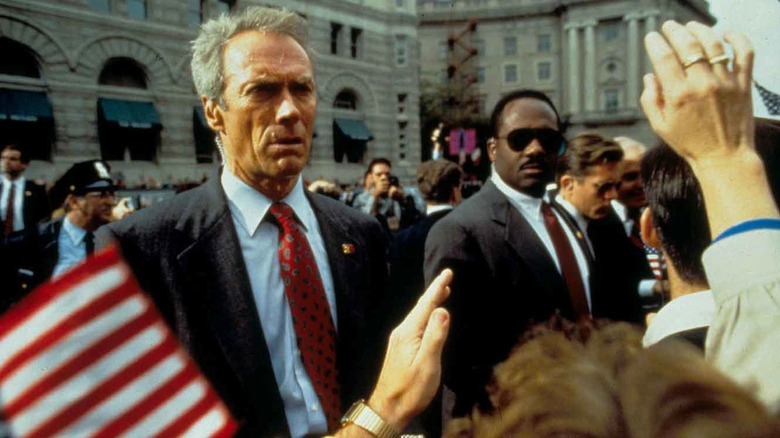
Liam Neeson and Clint Eastwood are very similar action stars. Both men take their characters seriously, and often show their respect for the armed services by playing realistic heroes that have learned from their combat experience. Eastwood is also one of the best directors of the past few decades. However, one of Eastwood's best action roles was actually in a film that was directed by German filmmaker Wolfgang Petersen. 1993's "In The Line of Fire" is the type of elevated action-thriller that "Taken" fans may enjoy.
"In the Line of Fire" stars Eastwood as Secret Service Agent Frank Horrigan. Despite his bravery in the service, Horrigan is still traumatized by an event from his past. He had failed to save President John F. Kennedy from being assassinated in Dallas in 1963. Horrigan is put in a similar situation when he learns that the current President (Jim Curley) is being targeted by the obsessive former CIA agent Mitch Leary (John Malkovich). If you thought that the kidnappers in "Taken" were scary, just wait until you see Malkovich's performance. He was so terrifying that he received an Academy Award nomination for Best Supporting Actor.
Body Of Lies (2008)
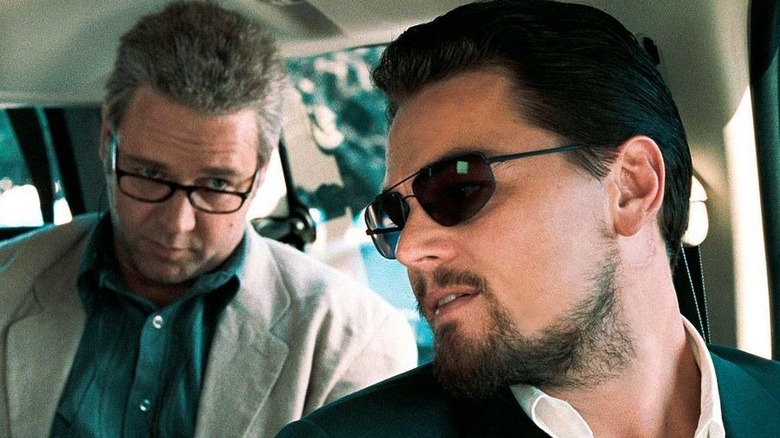
In "Taken," Mills has to deal with being an outsider in a foreign country. He's not as familiar with the customs, and as a result, he's completely out of his element. "Taken" shows the adventures of a former CIA agent, but Ridley Scott's underrated 2008 thriller "Body of Lies" takes a look at the government agency's current overseas operations. Scott does not completely lionize the CIA; he explores the missteps that have been made during the American campaigns in the Middle East.
In "Body of Lies," the CIA field agent Roger Ferris (Leonardo DiCaprio) desperately searches for the elusive terrorist leader Al-Saleem (Alon Abutbul). Al-Saleem's independent terror network in Jordan is aligned with Al-Qaeda. In order to draw the terrorists out of hiding, Ferris and his boss, CIA agent Ed Hoffman (Russell Crowe), create a fake radical organization. Even though they are mostly communicating with each other over the phone, DiCaprio and Crowe have excellent chemistry.
Thief (1981)
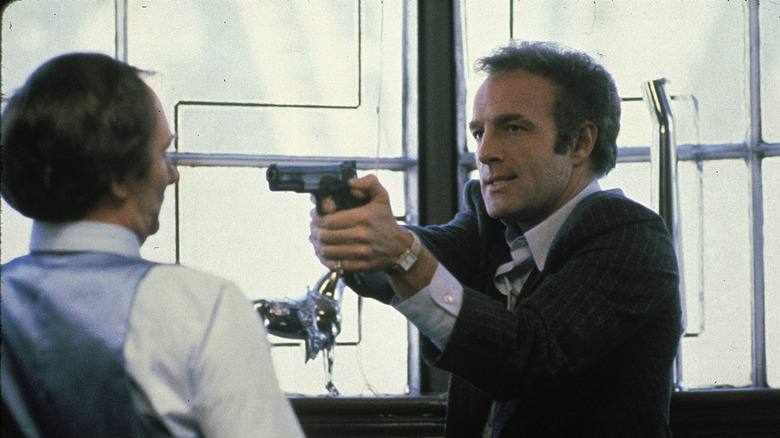
Neeson has dark charisma with his grim performance as Bryan Mills. Mills isn't trying to impress anyone, and his quiet attitude only makes him feel more calm and collected. No one was cooler than the late great James Caan. When Caan tragically passed away earlier this year, his fans remembered his breakout role in "Thief" as one of his crowning achievements.
Caan stars as Frank, a jewel thief who is called in to perform one last heist in order to save his family and forge a better future for himself. It's a violent, thrilling action film that is tightly written and well-acted. It wasn't like Caan wasn't a star before "Thief"; he had drawn critical acclaim for his performances in films like "Brian's Song," "The Gambler," and "The Godfather." However, "Thief" was a change of pace for him. The atmospheric, neo-noir style of "Thief" made it a distinct new take on the thriller genre. It came to define Caan in the same way that "Taken" defined Neeson.
Read this next: The 18 Best Action Movie Actors Ranked
The post 16 Movies Like Taken That You Should Check Out appeared first on /Film.
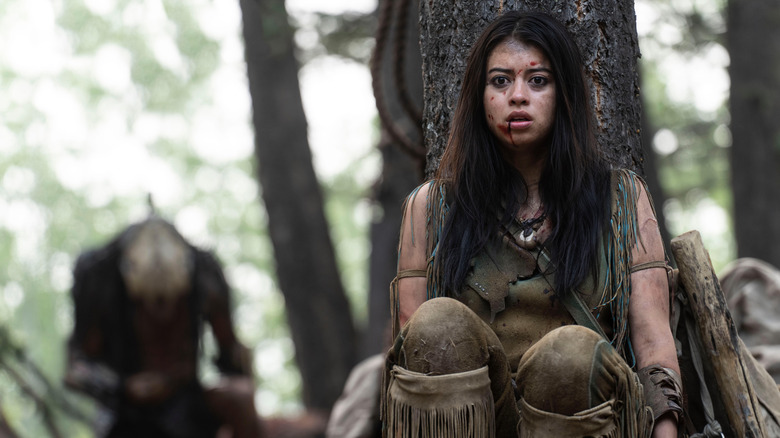
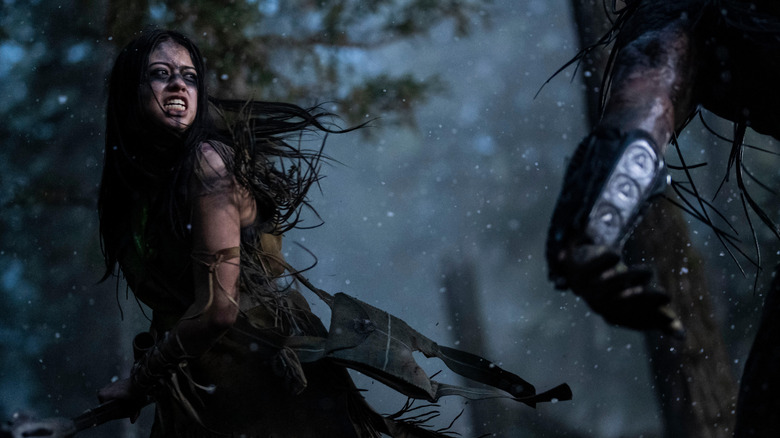
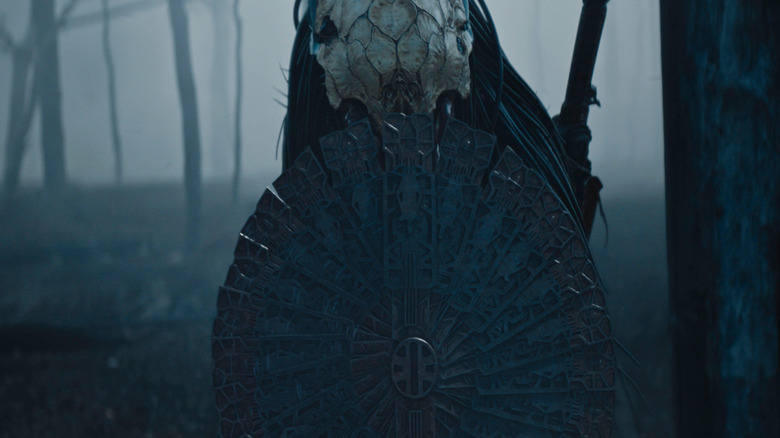
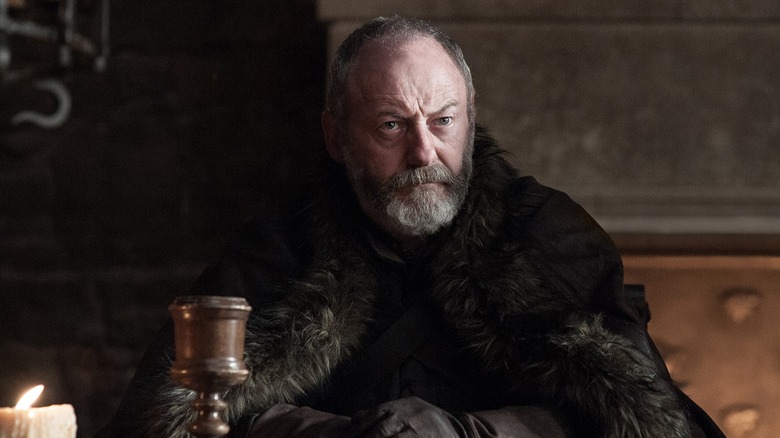
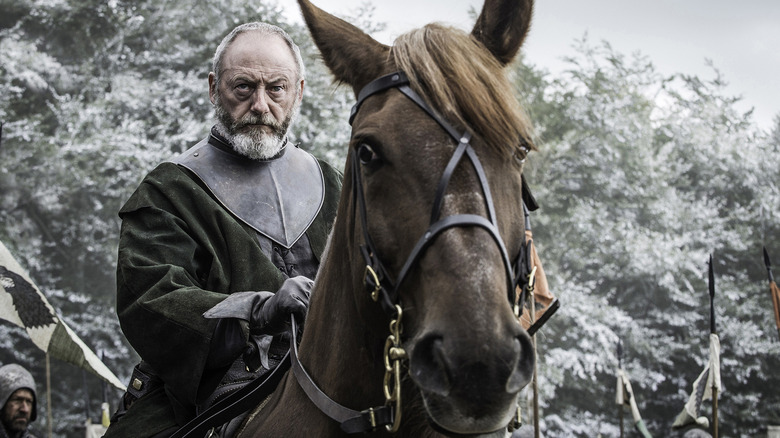
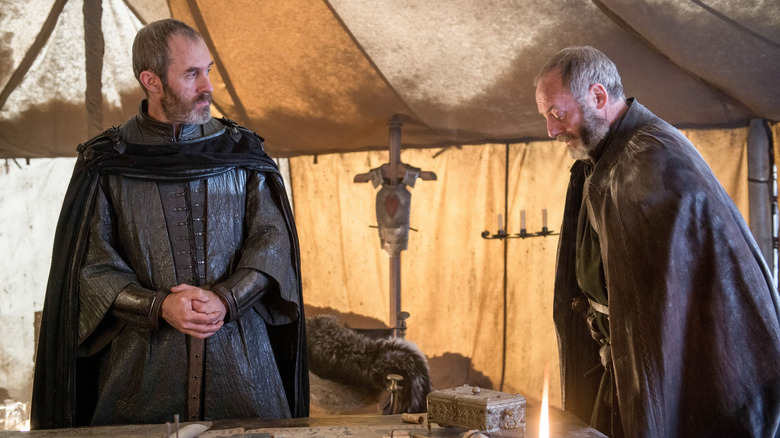
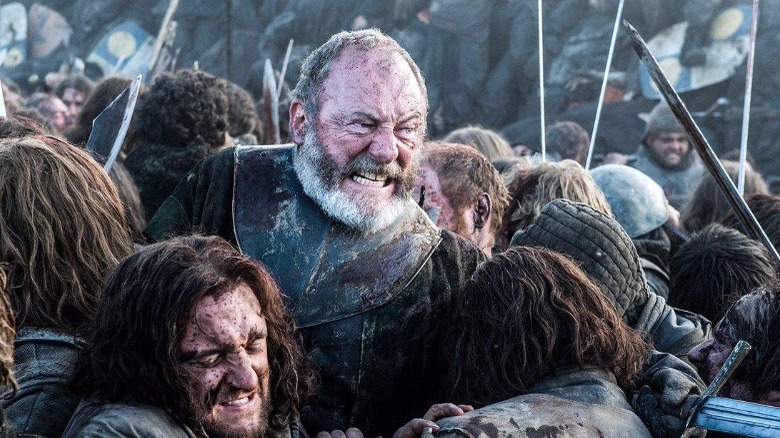

















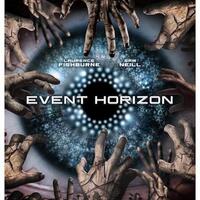 It’s hard to believe it’s been 25 years since Event Horizon was unleashed in theaters. To commemorate this milestone, Paramount Home Entertainment is releasing this sci-fi horror suckerpunch next week (August 9th) in North America. This 4K/Blu-ray combo release (with digital copy) comes packaged in a steelbook with plastic slipcover overlay, printed with a multitude of villain Dr. Weir’s grabby, undead hands. Those hands, of course, were wielded by Sam Neill under laborious prosthetics (he had to sit though somewhere around eight hours in the make-up chair). Event Horizon was directed by Paul Anderson (Alien vs. Predator, Resident Evil) who later added the “W.S.” to his name after being confused with Paul Thomas Anderson too many times. As the plot goes, a rescue crew headed...
It’s hard to believe it’s been 25 years since Event Horizon was unleashed in theaters. To commemorate this milestone, Paramount Home Entertainment is releasing this sci-fi horror suckerpunch next week (August 9th) in North America. This 4K/Blu-ray combo release (with digital copy) comes packaged in a steelbook with plastic slipcover overlay, printed with a multitude of villain Dr. Weir’s grabby, undead hands. Those hands, of course, were wielded by Sam Neill under laborious prosthetics (he had to sit though somewhere around eight hours in the make-up chair). Event Horizon was directed by Paul Anderson (Alien vs. Predator, Resident Evil) who later added the “W.S.” to his name after being confused with Paul Thomas Anderson too many times. As the plot goes, a rescue crew headed...

